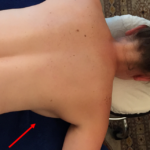What Are the Standards of Care to Prevent the Hiring of Predatory Massage Therapists?
August 15, 2025

I have worked as an expert witness in a massage context for the past 20+ years and have encountered a variety of cases involving predatory massage therapists. One thing that almost all of these cases have in common is that the business, whether a day spa or another type of wellness-focused facility, was missing essential steps in their hiring process. And without those steps, they mistakenly hired a predatory massage therapist, which ultimately led to dire consequences. Based on my experience, I have identified five essential screening steps that spas often overlook when hiring massage therapists. So, what are the standards of care to prevent the hiring of predatory massage therapists?
First, a disclaimer: screening out massage therapists who may be sexual predators or individuals with predatory tendencies takes many steps beyond these five, and even undertaking every step does not guarantee a 100% success rate. Effectiveness does increase, though, especially with thorough verbal and practical interviews and onboarding training. Yearly criminal and sexual predator background checks are also becoming standard practice.
Five crucial screening steps:
- Internet search
- Reference check
- Social media check
- Contacting the licensing authority
- Join the National Association of Spa Franchises for access to enhanced reference checks
What is the Danger of Missing a Screening Step?
Missing these screening steps increases the risk of hiring an unethical or predatory massage therapist. Below, I share a real-life example of a missed opportunity to reject an applicant that I encountered in one of the legal cases for which I provided consultation. Hiring is an area that should receive as many resources as a company can commit to because, once a massage therapist is hired, it becomes much more challenging to protect clients and the business. It is much easier to reject an applicant at the very beginning.
Step One: Do an Internet Search
Searching the internet is an easy step that many companies skip, but it’s a step that takes very little time and may give employers much-needed information. I was involved in a case a few years ago, and in the search bar, I just typed the name of the accused therapist and added “sexual assault.” The therapist’s name came up immediately, and showed he had been arrested and convicted of rape at an island resort near the United States. It was a simple search that the organization had skipped.
Step Two: Check Their References
While some companies do a really good job of checking professional references, others skip it or don’t put much effort into it. Having a dedicated person or team to check references is an effective method. The most effective reference checkers text the reference first so they know it’s not a sales call. The most experienced reference checkers ask pointed questions and get a lot of information, with the most important question to ask being, “Would you hire that person again?”
Step Three: Research Their Social Media
Checking the applicant’s social media often gives you a lot of information. Companies that do a thorough job searching Google, Facebook/Meta, Instagram, Twitter/X, TikTok, and possibly other specific interest platforms such as Parler, Reddit, and Twitch can help businesses decide if an applicant is eligible to be hired.
Step Four: Contact the Licensing Authority
Checking if the therapist has a valid massage license is usually easy. However, if there is an active complaint against the therapist, it does not generally show up electronically. That information can only be gathered with a call or email, which takes more time but is worth the effort.
Step Five: Join the National Association of Spa Franchises
The National Association of Spa Franchises (NASF) was established in 2021 to prevent massage therapists who have resigned or been terminated due to sexually inappropriate behavior from being hired again at another participating brand. The Employment Verification System (EVS) screens applicants through a third-party company called DISA (formerly Crimcheck) for a nominal annual fee. In the first eighteen months of operation, over 50,000 EVS searches were performed by the NASF members. This provided them with enhanced reference checks for more informed hiring decisions. NASF hopes all companies and clinics that hire massage therapists will join the NASF to help protect the public and the profession. For more information, visit https://nationalassociationofspafranchises.com/
By missing these simple screening steps, spas and other massage businesses do themselves and their clients a disservice. Clients and businesses will be much safer if companies can avoid hiring predatory massage therapists.
If you’re a lawyer who is currently involved in a sexual assault case and needs an expert witness with a massage or spa background, schedule a conversation with Dr. Benjamin.
Ben E. Benjamin holds a Ph.D. in Sports Medicine and has been an expert witness in cases of sexual assault in a massage/spa setting since 2004, advising lawyers, testifying in depositions and trials, and writing reports. His expertise extends beyond massage therapy and ethical behavior. He also advises spas, both large and small, on the creation of comprehensive sexual assault prevention strategies that ensure safe and ethical practices in the industry.
Standards of Care to Prevent the Hiring of Predatory Massage Therapists FAQs
- What are the industry standards to prevent the hiring of predatory massage therapists?
The five essential steps are 1. searching the internet, 2. checking references, 3. checking social media, 3. contacting the licensing authority, and 5. joining the National Association of Spa Franchises for access to their enhanced reference checks.
- Will these screening steps 100% prevent the hiring of predatory massage therapists?
Screening out massage therapists who may be sexual predators or individuals with predatory tendencies takes many steps beyond these five, but the effectiveness and robustness of a company’s hiring process does increase.
- What is the danger of missing a screening step?
Missing even one of these screening steps increases the risk of hiring an unethical or predatory massage therapist.
- How does searching the internet help screen out predatory massage therapists?
It’s a step that takes very little time and may give employers much-needed information, such as previous sexual assaults or other crimes that have been committed outside of the U.S.
- How does checking references help screen out predatory massage therapists?
By asking pointed questions, with the most important question being, “Would you hire that person again?”, reference checkers can learn a lot of information about an applicant.
- How does checking social media help screen out predatory massage therapists?
Checking the applicant’s social media can help businesses decide if an applicant is eligible to be hired.
- How does contacting the license authority help screen out predatory massage therapists?
The only confirmed way to know if there is an active complaint against a licensed massage therapist is to call or email the licensing authority.
- How does joining the National Association of Spa Franchises (NASF) help screen out predatory massage therapists?
The NASF provides its members with a way to conduct enhanced reference checks for more informed hiring decisions.
Related Posts

Expert Witness Insight: Sexual Assault and Poor Draping in Massage Therapy
What is Draping in Massage Therapy? Draping in massage therapy means securely covering the body with a sheet, blanket, and/or towel so that the private areas of the body are covered, feel safe, and are not ever exposed. These areas include the genitals, the female breasts, and the lower buttock, where the gluteal cleft is, […]

How High is Appropriate to Massage on the Upper Inner Thigh?
How High on the Upper Inner Thigh to Massage? The upper inner thigh is one of the gateway areas where predator massage therapists begin their sexual assault. The thigh should be draped so that the pelvis and the inner thigh are securely covered. The drape is generally a sheet tucked under the thigh and […]

Expert Witness Insight: When Massage Therapists Work on the Buttocks
When massage therapists work on the buttocks, clear communication is needed so the client feels safe. This area of the body is not usually touched by anyone other than an intimate partner. Consent is Required for Work on the Buttock in Massage Work in this sensitive area necessitates a conversation with the client before […]

Expert Witness Insight: Touching the Side of the Breast When Lying Face Down
Touching the Side of the Breast When Lying Face Down I would say that more than 99% of massage therapists are ethical professionals who would never commit a sexual assault on anyone. Massage therapists who are sexual predators are usually male and frequently test and groom the clients they choose to assault sexually. For example: […]

Working On the Chest in Order to Move to the Breast
Working On the Chest in Order to Move to the Breast When working on the pectoral muscles, the drape is lowered slightly. The pectoral muscles can be massaged appropriately, working not more than one or two inches below the collarbone. The point is that therapists are trained to work on the pectoral muscles while avoiding […]
